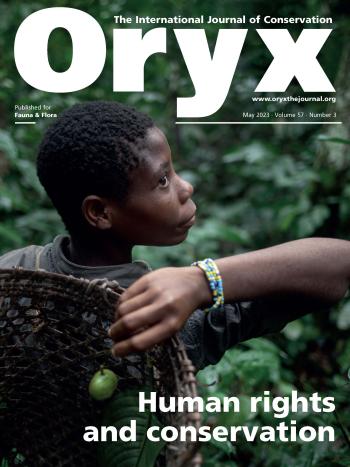First comprehensive camera-trap assessment of terrestrial mammals in the Yangambi landscape

The Yangambi Landscape includes the Biosphere reserve, neighbouring logging concessions and the customary land of the Turumbu ethnic group, for whom bushmeat forms an integral component of the diet and contributes to food security. Researchers from CIFOR and the University of Florence created a map of the Yangambi landscape, including relevant features, such as hunting trails, hunting/fishing camps, river crossing points, marshy areas, logging roads and artisanal mining camps, in combination with GPS data. This participatory mapping exercise was carried out together with local hunters, following guidance and permission from village leaders. The resulting map helped the researchers decide where to set up the cameras and provided important landscape information for occupancy modelling. Camera trapping was carried out over 2 monthly periods between 2018-2021. The size of survey sites was aligned with the ranges commonly associated with most medium-sized mammal species known in the study area.
In total, 26 mammal taxa (species or groups of species) were identified, including four species categorized as threatened on the IUCN Red List: the arboreal black-bellied pangolin Phataginus tetradactyla (Vulnerable), white-bellied pangolin Phataginus tricuspis (Endangered), the predominantly terrestrial giant ground pangolin (Endangered) and chimpanzee Pan troglodytes (Endangered). Unfortunately the assessment confirms previous reports by hunters of population loss in the Yangambi landscape (van Vliet et al., 2018), with both community occupancy and species richness lower than in other conservation areas in the Congo Basin.
Sustainable management should focus on maintenance of the most hunted species, to guarantee local food security, whilst improving the status of the most threatened species. A successful implementation of sustainable hunting rules - to regulate access to hunting grounds, reduce habitat destruction, and enforce bans on the most vulnerable species - is only possible in partnership with local communities.
For more information see:
- van Vliet, N., Muhindo, J., Nyumu, J., Mushagalusa, O. & Nasi, R. (2018) Mammal depletion processes as evidenced from spatially explicit and temporal local ecological knowledge. Tropical Conservation Science, 11, 1–16
- van Vliet, N., Quintero, S., Muhindo, J., Nyumu, J., Omar Cerutti, P., Nasi, R., & Rovero, F. (2023). Status of terrestrial mammals in the Yangambi Landscape, Democratic Republic of the Congo. Oryx, 1-12. doi:10.1017/S0030605322001569
